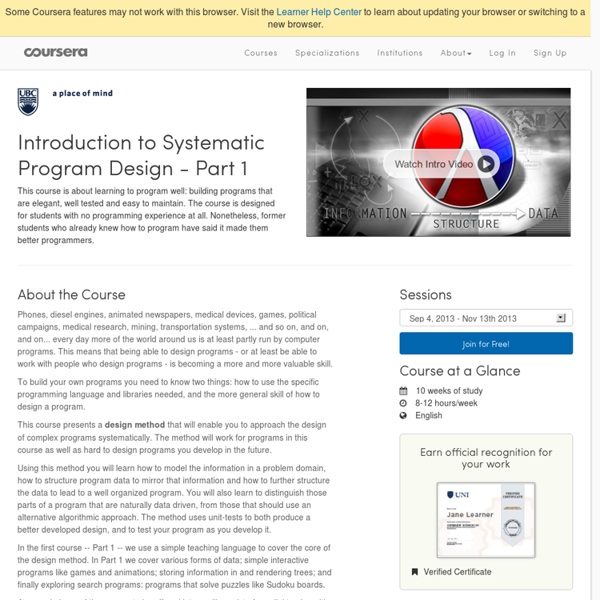Introduction to Systematic Program Design - Part 1

Design Patterns Strategy Pattern
In Strategy pattern, a class behavior or its algorithm can be changed at run time. This type of design pattern comes under behavior pattern. In Strategy pattern, we create objects which represent various strategies and a context object whose behavior varies as per its strategy object. Implementation We are going to create a Strategy interface defining an action and concrete strategy classes implementing the Strategy interface. StrategyPatternDemo, our demo class, will use Context and strategy objects to demonstrate change in Context behaviour based on strategy it deploys or uses. Step 1 Create an interface. Strategy.java public interface Strategy { public int doOperation(int num1, int num2);} Step 2 Create concrete classes implementing the same interface. OperationAdd.java public class OperationAdd implements Strategy{ @Override public int doOperation(int num1, int num2) { return num1 + num2; }} OperationSubstract.java OperationMultiply.java Step 3 Create Context Class. Context.java Step 4 Step 5
Related:
Related:



